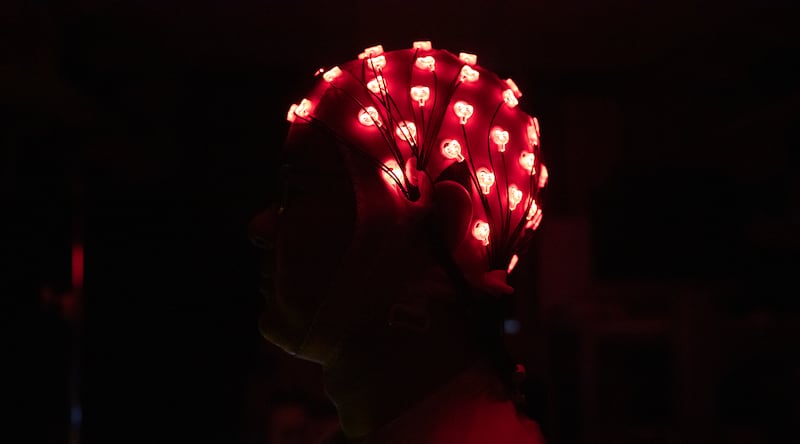Briefly showing people a visual flicker that aligns with their individual brainwave cycle can boost their learning ability in a visual identification task, a study has suggested.
Neuroscientists from Cambridge University attached sensors to the heads of 80 participants aged 18 to 35 to sample their brainwave rhythms.
They used these to create a visual pulse – of a high contrast white square displayed briefly on a dark background followed by a blank interval – at the same tempo as the individual’s alpha wave.
Participants got a 1.5-second dose of personalised pulse to set their brain working at its natural rhythm – a technique called “entrainment”.
They were then given a visual identification task – detecting targets on a cluttered background.
A brainwave cycle consists of a peak and trough.
Some participants received pulses matching the peak of their waves, some the trough, while others got rhythms that were either random or at the wrong rate – a little faster or slower.
Each participant repeated more than 800 variations of the visual identification task, and the neuroscientists measured how quickly people improved.
The learning rate for those locked into the right rhythm was at least three times faster than for all the other groups.

When participants returned the next day to complete another round of tasks, those who learned much faster under entrainment had maintained their higher performance level.
The research indicated that the learning boost only occurred when the visual flicker chimed with the trough of a brainwave.
Scientists believe this is the point in a cycle when neurons are in a state of “high receptivity”.
The study’s first author, Dr Elizabeth Michael, said: “It was exciting to uncover the specific conditions you need to get this impressive boost in learning.
“The intervention itself is very simple, just a brief flicker on a screen, but when we hit the right frequency plus the right phase alignment, it seems to have a strong and lasting effect.”
Professor Zoe Kourtzi of Cambridge’s Department of Psychology, who is senior author of the study, said: “Each brain has its own natural rhythm, generated by the oscillation of neurons working together.

“We simulated these fluctuations so the brain is in tune with itself – and in the best state to flourish.
“Our brain’s plasticity is the ability to restructure and learn new things, continually building on previous patterns of neuronal interactions.
“By harnessing brainwave rhythms, it may be possible to enhance flexible learning across the lifespan, from infancy to older adulthood.”
Co-author Professor Victoria Leong, from Nanyang Technological University in Singapore and Cambridge’s Department of Paediatrics, said: “We feel as if we constantly attend to the world, but in fact our brains take rapid snapshots and then our neurons communicate with each other to string the information together.
“Our hypothesis is that by matching information delivery to the optimal phase of a brainwave, we maximise information capture because this is when our neurons are at the height of excitability.”
She said the mechanism in the study mirrors the way people learn as infants.

“We are tapping into a mechanism that allows our brain to align to temporal stimuli in our environment, especially communicative cues like speech, gaze and gesture that are naturally exchanged during interactions between parents and babies,” said Prof Leong.
“When adults speak to young children they adopt child-directed speech – a slow and exaggerated form of speaking.
“This study suggests that child-directed speech may be a spontaneous way of rate-matching and entraining the slower brainwaves of children to support learning.”
Prof Kourtzi suggested that brainwave rhythms could be used to “enhance aspects of learning for children who struggle in regular classrooms, perhaps due to attentional deficits”.
She said they could also help with training in professions where fast learning and quick decision-making is vital, such as pilots or surgeons, adding: “Virtual reality simulations are now an effective part of training in many professions.
“Implementing pulses that sync with brainwaves in these virtual environments could give new learners an edge, or help those retraining later in life.”
The research is published in the journal Cerebral Cortex.








